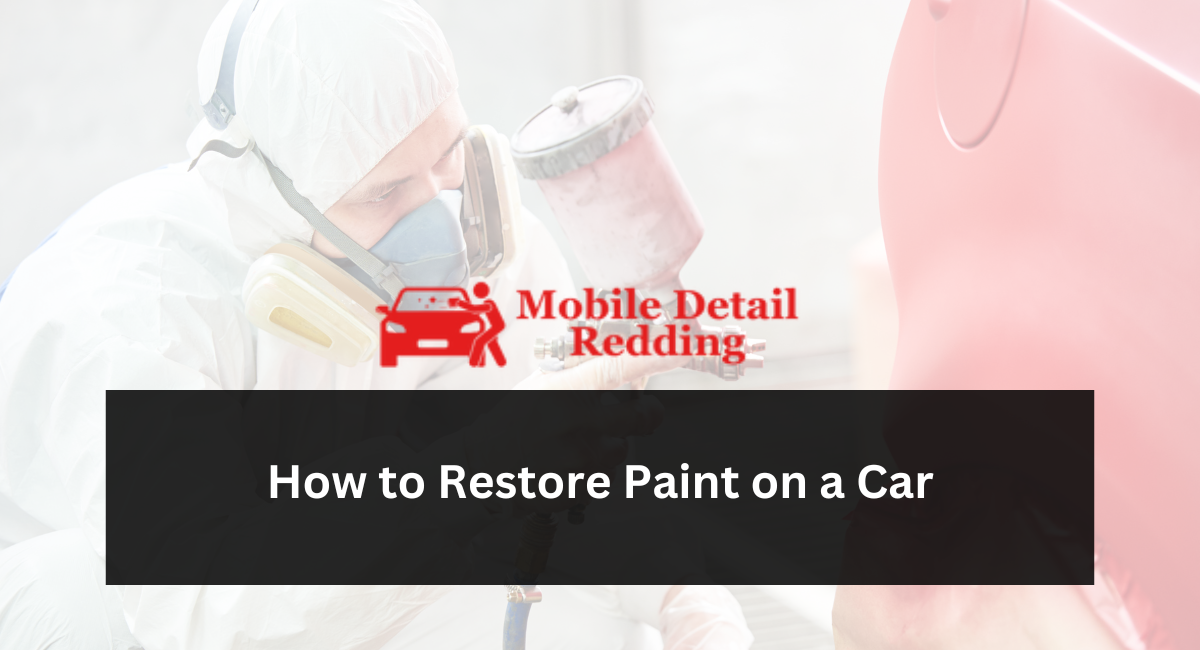Your car is not only a means to travel around, but also a representation of your individuality and taste. Nevertheless, as time goes by and you drive more miles, the once bright paint on your cherished vehicle could start to fade, affected by scratches, swirl marks, and oxidation.
Luckily, it is feasible to restore the paint on your car, which may be a satisfying project that revitalizes its appearance. In this comprehensive guide, we will walk you through the detailed process of rejuvenating the paint on a car, giving you the ability to maximize your car’s capabilities and attract attention wherever you go.
Exploring the Importance of Paint Restoration:
The paint on your car has a function beyond merely looking nice; it serves as a protective layer, guarding the metal underneath from rust, corrosion, and damage caused by the environment.
Over time, being exposed to sunshine, severe weather conditions, and pollutants can have a negative impact on the paint, making it lose its shine, become less vibrant, and develop defects. By refurbishing the paint, you not only improve the look of your car but also prolong its lifespan and safeguard its resale value.
Guide to Restoring Paint on a Car:
Assess the Paint Condition: Start by doing a thorough evaluation of your car’s paintwork. Please observe and make a record of any scratches, swirl marks, oxidation, or areas of fading that need to be addressed. This assessment will assist you in your restoration efforts and aid in deciding the most suitable line of action.
Completely clean and dry your car:
Before beginning the paint restoration process, it’s important to start with a fresh surface. Clean your car completely using a good car wash shampoo and a microfiber wash mitt to eliminate dirt, grime, and impurities. Thoroughly wash the car and use a clean microfiber towel or a drying aid to dry it, in order to avoid water marks.
Eliminate Surface Impurities:
To attain a sleek, flawless surface, employ a clay bar or clay mitt to eliminate ingrained impurities like tar, tree sap, and industrial residue. This procedure will prepare the paint for more repair and assure the best possible outcomes.
Deal with Paint Imperfections:
Based on how severe the imperfections are, you might have to use different methods to fix the paint. To address small scratches and swirl marks, you may want to try using a dual-action polisher or hand polish with a cutting compound to delicately remove the imperfections. To address more severe scratches or oxidation, it may be essential to use wet sanding or scratch removal solutions to even out the surface and restore consistency.
Compound and Polish:
After dealing with the paint flaws, it is now time to compound and polish the paint in order to improve its shine and clarity. Use a polishing product with a foam pad to eliminate any leftover imperfections and bring back shine. Use a polishing product to further improve the quality and obtain a shiny appearance.
Preserve with Wax or Sealant:
Following the process of compounding and polishing, it is important to preserve the recently repaired paint by applying a coat of wax or sealant. Use a good carnauba wax or synthetic sealer with a foam applicator pad. Apply it in tiny portions and let it dry before removing any leftover residue with a clean microfiber cloth. This layer of protection will not only improve the sheen of the paint but also offer durable defense against UV radiation, road dirt, and environmental pollutants.
Finishing Touches:
After finishing the paint restoration process, step back and appreciate your accomplishment. Utilize a little brush to cleanse difficult-to-access regions, such as logos and decorative elements. Clean the windows and mirrors with a glass cleaner for a clear finish, and think about using a tire dressing to improve the look of your tires and complete the overall aspect of your automobile.
Maintenance:
To maintain the results of your paint restoration efforts, develop a consistent maintenance schedule. Clean your automobile frequently with a car wash shampoo that is pH-balanced and fix any flaws as they appear. Moreover, regularly apply a new layer of wax or sealer every few months to preserve the paint’s protection and luster.
Conclusion:
Repairing paint on a car is a task that demands dedication, carefulness, and the appropriate materials and methods. By using this detailed guide, you’ll be well-prepared to address flaws, improve the gloss, and safeguard the paint of your car for many years. Whether you’re an experienced auto enthusiast or a beginner trying to improve your car care skills, the benefits of achieving a beautifully restored paint finish are definitely worth the time and energy. Therefore, prepare yourself, let your imagination flow freely, and begin a quest to turn your vehicle into an exceptional work of art. Your vehicle will appreciate it, and you’ll have the pleasure of driving an eye-catching masterpiece wherever you travel.

Leave a Reply